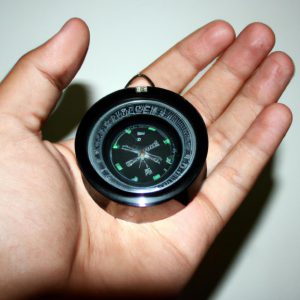Physics Research Funding Organizations: A Guide to Physics Directories for Funding

Physics research is a complex and highly specialized field that requires substantial financial resources to support its advancement. As such, it is crucial for researchers and institutions to have access to reliable information about funding organizations in order to secure the necessary funds for their projects. In this article, we will explore physics directories that provide comprehensive listings of funding organizations, offering invaluable guidance for researchers seeking financial support.
Imagine a scenario where Dr. Smith, a brilliant physicist with groundbreaking ideas, is looking to fund her innovative research project on quantum computing. Without proper knowledge of potential funding sources, she finds herself overwhelmed by the daunting task of searching for suitable organizations. Fortunately, physics directories exist as valuable tools that simplify this process by providing centralized databases of reputable funding bodies specifically dedicated to supporting physics research. These directories offer researchers like Dr. Smith an extensive list of organizations along with detailed descriptions of each one’s mission, focus areas, eligibility criteria, application processes, deadlines, and available grants or scholarships.
By utilizing these physics directories effectively, researchers can save time and effort while increasing their chances of securing vital funding. The purpose of this article is to serve as a guide to help physicists navigate through various physics directories and understand how they can best utilize these resources. By examining different aspects such as the compreh ensiveness of the directory, user-friendliness of the platform, and the credibility of the listed funding organizations, researchers can make informed decisions about which directories to use.
One important factor to consider when evaluating a physics directory is its comprehensiveness. A good directory should include a wide range of funding organizations that support different subfields within physics. This ensures that researchers like Dr. Smith have access to a diverse set of opportunities tailored to their specific research interests.
User-friendliness is another crucial aspect to consider. The directory should be easy to navigate and search, allowing researchers to quickly find relevant funding opportunities. Additionally, it should provide clear and concise information about each organization, making it easier for researchers to determine if they are eligible and if their project aligns with the organization’s mission.
Credibility is also paramount when selecting a physics directory. Researchers must ensure that the listed organizations are reputable and trustworthy sources of funding. It is advisable to verify the legitimacy of these organizations through independent research or by consulting with colleagues who have experience in securing funding.
Once researchers have identified suitable physics directories, they can begin utilizing them effectively by following these steps:
-
Familiarize yourself with the directory: Understand how the directory categorizes its listings and familiarize yourself with its search functions. Take note of any additional features such as advanced filters or personalized recommendations.
-
Refine your search criteria: Specify your research area, desired funding type (grants, scholarships, fellowships), geographic location preferences, and eligibility requirements (e.g., early-career researchers or specific academic qualifications).
-
Review organization profiles: Examine each organization’s profile thoroughly to determine if their objectives align with your research goals. Pay attention to their focus areas, previous projects funded, and any restrictions or special conditions associated with their grants.
-
Check application details: Note down application deadlines, required documents (such as research proposals or letters of recommendation), and any specific application procedures. Ensure that you meet all the criteria before proceeding.
-
Prepare a strong application: Craft a compelling research proposal, highlighting the significance of your work and how it aligns with the goals of the funding organization. Seek feedback from mentors or colleagues to strengthen your application further.
-
Submit your application: Follow the instructions provided by the funding organization carefully and submit your application before the deadline. Keep track of any additional steps such as interviews or presentations, if applicable.
-
Explore alternative funding sources: If you do not receive funding from your initial applications, consider exploring other directories or reaching out to professional societies, government agencies, private foundations, or industry partnerships for potential support.
By utilizing physics directories effectively and following these steps, researchers like Dr. Smith can streamline their search for funding opportunities and increase their chances of securing crucial financial resources for their innovative projects in quantum computing or any other field within physics.
National Science Foundation (NSF)
Imagine you are a young physicist with groundbreaking research ideas but limited resources to bring them to fruition. You find solace in the fact that there exist organizations dedicated to funding scientific endeavors, such as the National Science Foundation (NSF). Let’s delve into this renowned organization and explore its role in supporting physics research.
The NSF is one of the premier sources of federal funding for scientific research in the United States. Established by Congress in 1950, it operates under the guiding principle of advancing knowledge across all fields of science and engineering. With an annual budget exceeding $8 billion, the NSF has consistently fostered innovation and excellence within academia, providing researchers with essential financial support.
To fully comprehend the significance of NSF’s contributions to physics research, let us consider some key aspects:
- Research Grants: The NSF offers various grant programs aimed at promoting cutting-edge physics investigations. These grants provide scientists with crucial funds necessary for conducting experiments, acquiring equipment, and hiring personnel.
- Collaborative Opportunities: Beyond monetary assistance, the NSF actively encourages collaboration among physicists through initiatives like Research Coordination Networks and Physics Frontier Centers. Such collaborative efforts amplify innovative thinking while facilitating interdisciplinary approaches.
- Education Support: Recognizing the importance of education in fostering future breakthroughs, the NSF invests heavily in training programs for both undergraduate and graduate students pursuing physics degrees. Scholarships, fellowships, and internships ensure that promising minds receive adequate mentorship and financial backing throughout their academic journey.
- Broadening Participation: In line with its commitment to diversity and inclusivity, the NSF emphasizes broadening participation in physics research from traditionally underrepresented groups. Through targeted programs and partnerships with institutions nationwide, they strive to create equal opportunities for aspiring physicists from diverse backgrounds.
Let us now transition our focus towards another influential entity committed to driving progress in physics research: The European Research Council (ERC).
European Research Council (ERC)
European Research Council (ERC)
After exploring the research funding opportunities provided by the National Science Foundation, we now turn our attention to another prominent organization in the field of physics research: the European Research Council (ERC). To illustrate the impact and potential benefits of seeking funding from this institution, let us consider a hypothetical scenario.
Imagine Dr. Smith, an accomplished physicist specializing in quantum mechanics, has been conducting groundbreaking research on entanglement phenomena. Seeking financial support to further their work, they decide to apply for funding from ERC. This decision is based on various factors that make ERC an appealing choice for researchers:
- Prestige: The ERC is widely regarded as one of Europe’s most prestigious science-funding bodies.
- Generosity: It offers substantial grants that can significantly contribute to project costs and enable extensive investigations.
- International Collaboration: By encouraging collaboration across borders, ERC promotes scientific cooperation among diverse teams.
- Flexibility: Unlike some other funding agencies, ERC provides researchers with significant autonomy and flexibility in pursuing their projects.
To provide a comprehensive overview of ERC’s offerings, here is a table highlighting different grant schemes available through this organization:
| Grant Scheme | Description |
|---|---|
| Starting Grants | Support for promising early-career researchers |
| Consolidator Grants | Aid for consolidating independent research careers |
| Advanced Grants | Funding for established leaders in their respective fields |
| Synergy Grants | Assistance for collaborative efforts between multiple PIs |
In conclusion, considering its reputation, generous funding options, emphasis on international collaboration, and flexible approach towards research projects, applying for funding from the European Research Council can offer numerous advantages to physicists like Dr. Smith who seek financial assistance to advance their scientific endeavors.
Moving forward, let us explore yet another notable organization in the realm of physics research funding: the Department of Energy (DOE).
Department of Energy (DOE)
European Research Council (ERC) is one of the leading organizations that provides funding for physics research in Europe. However, it is important to explore other avenues as well to maximize funding opportunities. Another prominent organization worth considering is the Department of Energy (DOE) in the United States.
Let’s consider a hypothetical scenario to understand how DOE can contribute to physics research funding. Imagine a group of researchers working on developing more efficient solar panels using advanced materials and technologies. They have made significant progress but require additional financial support to conduct further experiments and scale up their prototypes. In this case, they could turn to the Department of Energy for potential funding options.
When exploring funding opportunities with the DOE, it is essential to be aware of certain aspects:
- Eligibility criteria: Researchers need to ensure that their projects align with the priorities and objectives set by the DOE.
- Application process: Familiarize yourself with the specific guidelines and requirements outlined by the department before submitting any proposals.
- Evaluation procedure: Understand how project proposals are reviewed and evaluated by experts within the DOE.
- Funding mechanisms: Explore different types of grants or cooperative agreements offered by the department and determine which would best suit your research needs.
To illustrate these points further, let’s take a look at an example table showcasing various funding mechanisms available through the DOE:
| Funding Mechanism | Description | Application Deadlines |
|---|---|---|
| Grant Programs | Non-repayable funds for specific areas | Annually |
| Cooperative Agreements | Collaborative partnerships | Varies based on program |
| Fellowships | Support for individual researchers | Biannually |
| Small Business Grants | Funding for small businesses | Quarterly |
In summary, while ERC offers excellent opportunities for physics research funding in Europe, researchers should also explore other organizations such as DOE in the US. By understanding the eligibility criteria, application process, evaluation procedure, and funding mechanisms provided by DOE, researchers can increase their chances of securing additional financial support for their projects. Now let’s move on to exploring another prominent organization in physics research funding: the National Aeronautics and Space Administration (NASA).
National Aeronautics and Space Administration (NASA)
As we delve further into the realm of physics research funding organizations, it is essential to explore the opportunities provided by the National Aeronautics and Space Administration (NASA). To illustrate their commitment to advancing scientific knowledge, let us consider a hypothetical scenario where a team of physicists seeks funding from NASA for a project aimed at developing advanced propulsion systems for deep space exploration.
When exploring potential funding options within NASA, it is crucial to navigate through the various programs available. Some notable programs offered by NASA include:
- The Astrophysics Research and Analysis Program (APRA): This program focuses on supporting projects that enhance our understanding of astrophysical phenomena through observations, data analysis, theoretical modeling, and laboratory experiments.
- The Earth Science Research Program (ESRP): Designed to address key questions related to Earth’s climate system, this program supports studies investigating atmospheric composition and dynamics, land surface processes, oceanography, and natural hazards.
- The Planetary Science Division Research Programs: These programs aim to investigate planetary bodies within our solar system. They encompass missions exploring Mars, Jupiter’s moons, Saturn’s rings, asteroids, comets, and other celestial objects.
- The Heliophysics Research Program: Focusing on studying the Sun-Earth system interactions and its effects on space weather phenomena such as solar flares and geomagnetic storms.
To provide an overview of NASA’s funding priorities across these programs in a visually engaging manner:
| Funding Priorities | Examples |
|---|---|
| Exploration | – Developing technologies for human spaceflight beyond low-Earth orbit.- Investigating habitability potential of extraterrestrial environments. |
| Sustained Presence | – Conducting long-duration crewed missions aboard the International Space Station.- Establishing lunar outposts in collaboration with international partners. |
| Scientific Discovery | – Understanding fundamental physical processes governing the formation of stars and galaxies.- Investigating the potential for life on other planets. |
| Technological Innovation | – Advancing propulsion systems for deep space exploration.- Developing new instrumentation for remote sensing missions. |
As researchers consider seeking funding from NASA, it is imperative to align their proposals with these priorities while demonstrating innovation, scientific rigor, and feasibility.
Transitioning into our next section about the Japan Society for the Promotion of Science (JSPS), we will explore another prominent organization that plays a significant role in supporting physics research endeavors.
Japan Society for the Promotion of Science (JSPS)
Moving on from NASA’s research funding, another prominent organization that provides substantial support for physics research is the Japan Society for the Promotion of Science (JSPS). To illustrate the impact of JSPS funding, let us consider a hypothetical case study involving Dr. Yamamoto, a talented physicist researching quantum mechanics.
Dr. Yamamoto, seeking financial backing to further his groundbreaking research, successfully secured a grant from JSPS. This enabled him to establish a state-of-the-art laboratory equipped with advanced instruments and hire a team of skilled researchers. With this support, he made significant contributions in unraveling intricate aspects of quantum entanglement, ultimately advancing our understanding of fundamental particles at the microcosmic level.
To understand why organizations like JSPS hold such significance within the scientific community, it is crucial to recognize their various roles and contributions. Here are some key points about JSPS:
- Commitment to excellence: JSPS demonstrates an unwavering commitment to fostering excellence in scientific research by providing generous grants and fellowships.
- International collaboration: Through partnerships with institutions worldwide, JSPS actively promotes collaborations between Japanese scientists and their international counterparts.
- Support across disciplines: While focusing primarily on physics research, JSPS also extends its funding support to other fields such as chemistry, biology, mathematics, and engineering.
- Career development opportunities: Alongside financial assistance for ongoing projects, JSPS offers career advancement programs aimed at nurturing young researchers and encouraging interdisciplinary studies.
By analyzing these factors and examining real-life success stories like Dr. Yamamoto’s case study above, it becomes evident how pivotal organizations like JSPS are in driving innovation and progress within the field of physics.
Transitioning into the subsequent section about Research Grants Council (RGC), we delve deeper into exploring additional avenues available for securing vital funds for your physics research endeavors.
Research Grants Council (RGC)
Research Grants Council (RGC)
Continuing our exploration of physics research funding organizations, we now turn our attention to the Research Grants Council (RGC). Established in 1946, the RGC aims to promote and support scientific research across various disciplines in Hong Kong. With a focus on fostering collaboration between researchers from different institutions, the RGC plays a crucial role in advancing knowledge and innovation within the field of physics.
To illustrate the impact of the RGC’s work, let us consider a hypothetical case study: Dr. Lee, an aspiring physicist based in Hong Kong, seeks financial support for her groundbreaking research project investigating quantum entanglement. Recognizing the importance of this cutting-edge research area, she submits a grant proposal to the RGC outlining her objectives and methodology. After careful evaluation by expert reviewers appointed by the council, Dr. Lee is awarded a substantial research grant that enables her to conduct experiments, purchase necessary equipment, and disseminate her findings through conferences and publications.
The Research Grants Council provides several benefits for physicists seeking funding opportunities:
- Wide Range of Funding Schemes: The RGC offers various funding schemes tailored to suit diverse research needs and career stages. These include Early Career Scheme (ECS) grants for young researchers starting their independent careers and Theme-based Research Scheme (TRS) grants focusing on interdisciplinary topics.
- Peer Review Process: All grant proposals submitted to the RGC undergo rigorous peer review by experts in relevant fields. This ensures fair assessment and allocation of funds based on scientific merit and potential impact.
- Collaborative Opportunities: Through its cross-institutional initiatives such as Collaborative Research Fund (CRF), the RGC actively encourages collaborative projects among researchers from different universities or organizations. This promotes knowledge exchange and fosters innovative ideas within the physics community.
- Capacity Building Programs: In addition to providing financial support, the RGC organizes capacity building programs including workshops, seminars, and training sessions. These initiatives aim to enhance researchers’ skills and knowledge, ultimately strengthening the research capabilities within Hong Kong’s physics community.
To further illustrate the funding schemes offered by the RGC, we present a table outlining some of their key programs:
| Funding Scheme | Description |
|---|---|
| Early Career Scheme | Supports young researchers in early stages |
| of their independent careers | |
| Theme-based Research | Funds interdisciplinary projects exploring |
| Scheme | specific themes or areas of interest |
| Collaborative Research | Promotes collaboration between researchers |
| Fund | from different universities or organizations |
In summary, the Research Grants Council (RGC) plays a pivotal role in advancing physics research in Hong Kong through its comprehensive range of funding schemes and collaborative opportunities. By providing financial support to researchers like Dr. Lee, the RGC enables groundbreaking discoveries and contributes to the growth and innovation within the field. Whether you are an early career physicist or an established researcher seeking interdisciplinary collaborations, exploring the funding opportunities provided by the RGC can prove invaluable for your scientific endeavors.







